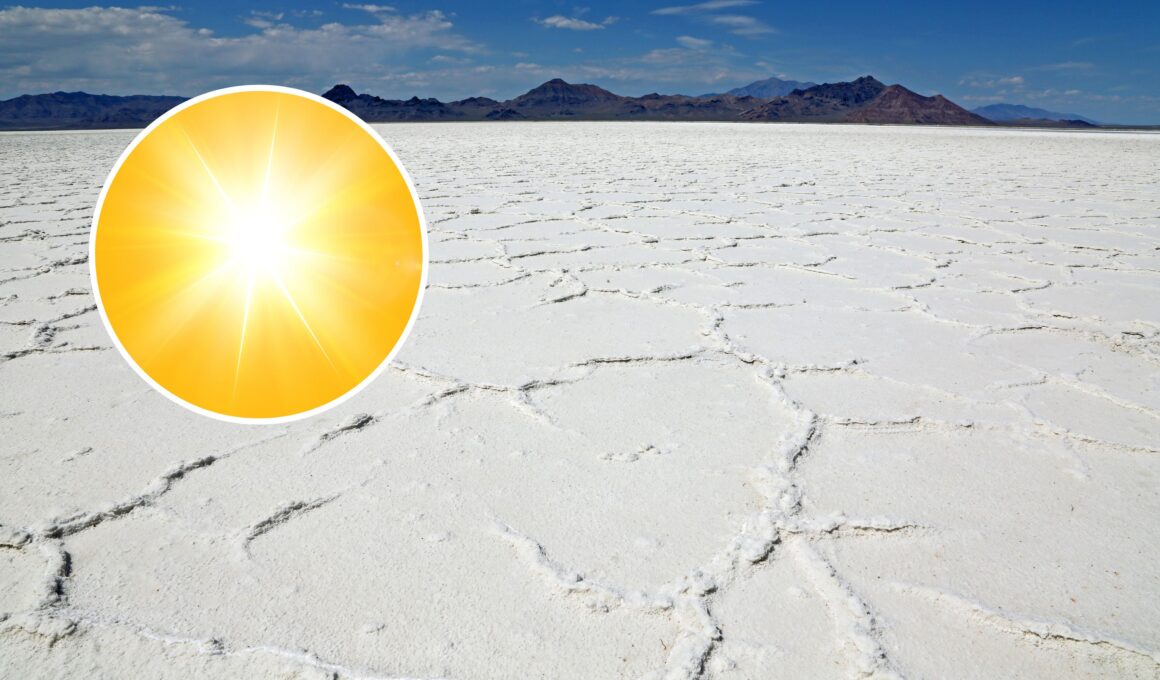Utah’s famous Great Salt Lake may be pouring greenhouse gases into our atmosphere.
According to a new paper in the journal One Earth, 4.1 million tons of CO2 and other greenhouse gases were emitted by the lake bed of the Great Salt Lake in 2020 alone.
This may suggest that the Great Salt Lake and lake beds like it around the world are much more significant contributors to global warming than we first thought.
“Human-caused desiccation of Great Salt Lake is exposing huge areas of lake bed and releasing massive quantities of greenhouse gases into the atmosphere,” study co-author Soren Brothers, the Allan and Helaine Shiff curator of climate change at Royal Ontario Museum, said in a statement.
The Great Salt Lake, located in northern Utah, is the eighth-largest terminal lake in the world at 1,700 square miles in area. The lake has been experiencing a decline in water levels for several decades, primarily due to significant amounts of water from the rivers feeding it being diverted for agricultural, industrial and residential use, as well as drought conditions driven by climate change.
This drying of the Great Salt Lake has various effects on the region, such as releasing dust and harmful particulates into the air, contributing to poor air quality and respiratory issues for nearby populations, and threatening the habitat of brine shrimp and bird species.
The researchers found that the dry lake bed emits large amounts of CO2 into the atmosphere compared to the amount released by the lake’s water when full.
“What our study shows is that CO2 emissions from the Great Salt Lake’s waters are probably very low, whereas emissions from the dried up lake bed are very high, especially in summer months,” Brothers told Newsweek. “Essentially, these exposed sediments are rich in organic matter that had settled on the lake bed, and now that they’re exposed to the atmosphere, it’s much easier for bacteria to turn that matter into carbon dioxide through their respiration.”
In the paper, the researchers described how they measured CO2 and methane emissions from sites at various locations around the lake bed and compared them to estimates of how the lake would have emitted these gases when filled with salty water.
They discovered that 4.1 million tons of greenhouse gases were released in 2020, 94 percent of which was made up of CO2. The total effect was calculated as “carbon dioxide equivalents,” due to methane being 28 times more effective at trapping heat in our atmosphere than CO2.
Overall, they found that the drying of the lake has caused a 7 percent increase in the human-caused greenhouse gas emissions of the entire state.
“The best and maybe only way to keep this CO2 from being released is by ensuring that Great Salt Lake remains wet. In the western U.S., there are multiple proposed solutions toward this goal, including water markets, and outdated western water laws are part of the issue,” Brothers said.
The researchers also found that the greenhouse gas emissions of the lake bed were strongly linked to increased temperatures in the region. If climate change worsens as expected, it will be harder and harder to keep the Great Salt Lake filled with water, and temperatures will climb, causing a positive feedback loop of more and more CO2 being released into the atmosphere.
The researchers said this is likely also an issue with drying lake beds around the world, further worsening the effects of climate change.
“We found that the range of emissions we measured from Great Salt Lake over the course of a year was similar to the range observed in a global study of dry fluxes from rivers, lakes, and reservoirs around the world,” Brothers said. “Essentially, this and that study both indicate that such emissions are similar around the world and mostly controlled by temperature and moisture.”
Do you have a tip on a science story that Newsweek should be covering? Do you have a question about climate change? Let us know via science@newsweek.com.
Uncommon Knowledge
Newsweek is committed to challenging conventional wisdom and finding connections in the search for common ground.
Newsweek is committed to challenging conventional wisdom and finding connections in the search for common ground.






